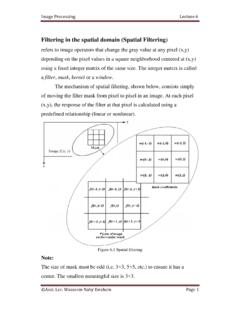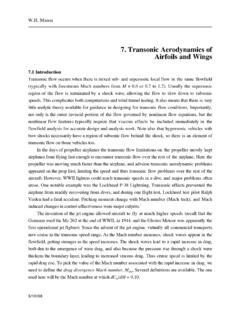Transcription of CHAPTER 1: ABOUT GRAPHIC DESIGN - Pearson
1 2 CHAPTER 1: ABOUT GRAPHIC 210/29/12 9:01 PM CHAPTER OBJECTIVES AFTER READING THIS CHAPTER , YOU SHOULD BE ABLE TO: Sequence the heritage of GRAPHIC DESIGN , beginning with early cave paintings, noting the first use of the term, and continuing through to present times. Summarize the many categories of GRAPHIC DESIGN . Describe what it means to be a GRAPHIC designer. Distinguish art forms and theories that have influenced the development of GRAPHIC DESIGN . Sequence the steps of the DESIGN process, from the first contact with a client to the finished work. Characterize the basic components of a GRAPHIC DESIGN solution. Exercises and Projects Research categories of GRAPHIC DESIGN ; critique GRAPHIC designs; DESIGN a T-shirt using text and image; visually document and present a business through the eyes of a GRAPHIC designer.
2 31 ABOUT GRAPHIC DESIGN The field uses the two words GRAPHIC and DESIGN because of the dual nature of its process. Successful DESIGN solutions stimulate viewers intellectually and move them emotionally by including both familiar and surprising elements. As a result, a DESIGN communication can not only explain some-thing to an audience but also affect that group on another level. If you apply this complex thinking to your DESIGN process, the results will reflect your intentions, and your messages will be clear. A website is user friendly when its pages are attractive and its navigation simple; a book s content might be more accessible when its cover presents an expressive visual metaphor; a building is easier to navigate when the architect has applied a logical system of signage to its passageways.
3 Each of these situations presents a unique communication problem, solved with specific DESIGN approaches. Being a designer also involves finding ways to reveal the beauty in something that others may not see and expressing a thought in an raphic DESIGN is so much a part of our lives that at times it goes unnoticed. The layout of type and imagery on the page you re reading right now is a key aspect of GRAPHIC DESIGN . This book was designed by organizing all the visual and textual information into a communicable message, an object bound between two covers. But if organizing were the only job of GRAPHIC designers, the computer would have replaced us by page: KAREEm COllIE. Opening page (detail) for Man behind the Curtain (full image, see Figure ).
4 GI think DESIGN in essence has to have an authentic honesty built into it. The main goal is to convey something that makes a difference in other people s lives. Scott W. SantoroWatch the Video on 310/29/12 9:01 PM4 CHAPTER 1: ABOUT GRAPHIC DESIGN unexpected way a mission through which blending the useful with the aesthetically appealing has one primary goal to communicate. For example, Rafael Esquer embraced the notion of giving instead of receiving by transforming a clothing collection bag into a typographic call to action (Figure ). The fresh approach was also a declaration that read visually as This idea is so clever, I want to help. According to the designer, most people liked the DESIGN so much that they kept it as a laundry bag and sent their clothing donations in plain bags and another example, Pierre Bernard transformed the scaffolding for an architectural renovation into a sidewalk spectacle for the Centre Pompidou in Paris (Figure ).
5 A giant program listed the museum s monthly events, and, after each event was over, it was manually crossed out by mountaineers hoisting themselves down on ropes. This creative idea made a simple calendar into a continually dramatic and entertain-ing performance. The designer found an idea and pushed it further than anyone would have expected. A GRAPHIC designer needs to be part artist, scientist, researcher, psychologist, and work incorporates aesthetics (to achieve notions of beauty) structure (to organize and arrange), emotion (to accentuate feelings), and RAFAEl ESqUER. Clothing donation bag sent to clients for the holidays as a way to help people in 410/29/12 9:01 PIERRE BERNARD, ATElIER DE CR ATION GRAPHIqUE.
6 For the Centre Pompidou renovation in Paris, a temporary system of signs was devised. Type was hoisted up, crossed out, and ultimately removed. utility (for use). Whether designing for an individual, a small business, or a large corporation, the designer brings a degree of art, craft, intelligence, and intuition to every designers often collaborate with writers, illustrators, pho-tographers, and printers, making for an energizing work environment. Clients sometimes invest large sums of money, and an audience of mil-lions just might see the designer s work, but the most exciting aspect of the GRAPHIC designer s job and the most admirable one is saying some-thing that matters, and saying it with both grace and intelligence. Everything is DESIGN .
7 Everything! Paul Rand 5 View a Closer Look for the Centre Pompidou on 510/29/12 9:01 PM6 CHAPTER 1: ABOUT GRAPHIC DESIGNG raphic DESIGN s HeritageGraphic DESIGN (the art of conveying messages) has always been a part of us, even as far back as the early cave paintings of approximately 16,000 years ago. Scenes of the hunt like the ones pictured at Lascaux may have been more than merely decorative, possibly serving a number of purposes (Figure ). One purpose may have been to literally describe the animals as an instruction manual might, picturing what to chase and what to avoid. Another likely purpose may have been to bring good for-tune by symbolically capturing the animals on the wall. Made with only burnt sticks and colored pigments, these beautifully executed designs could have motivated the hunting group and helped it to 14,000 years, a stone mosaic from Pompeii was used to communicate an important message: Beware of the dog (Figure ).
8 A ferocious dog perfectly translated into the black and white mosaic along with words of caution made its point clearly to visitors. Forward another 1,700 years to America s first political cartoon, Join or Die, a woodcut by Benjamin Franklin (1706 1790) (Figure ). Franklin s wit and conviction can be seen in the DESIGN of a snake severed into eighths, each segment representing a British American colony or region. The DESIGN inspired colonial unity in a yet-to-be-born country. Today, digital printing and electronic media have replaced cave wall paintings, mosaics, and woodcuts. But the functional aspect of GRAPHIC DESIGN is the same to educate, symbolize, and even compel us to action. Understanding GRAPHIC DESIGN in the context of its history is essen-tial to being a good designer.
9 In CHAPTER 2, A Brief History of GRAPHIC DESIGN , you will come to see why this context is so important. The Coining of the TermThe great book designer W. A. Dwiggins (1880 1956) coined the term GRAPHIC DESIGN in 1922. Since then, GRAPHIC DESIGN has grown into its own, legitimate profession. Dwiggins had it right in two ways. First by blending the words GRAPHIC and DESIGN , he better explained the pro-cess GRAPHIC sensibility fused with planning and organizing. Second, by naming the profession, he categorized it as its own, legitimate GRAPHIC DESIGN had an association with commerce, just as printing, lettering, and the advertising trades did, it was no longer con-sidered a subcategory of those trades but a valid field in its own right.
10 Dwiggins s term was just abstract enough to encompass many kinds of DESIGN . (See the upcoming Excerpt from The Name Game, by Michael Worthington.) The categories of GRAPHIC DESIGN , as described in this chap-ter, all have their own particular practices, and what unites them is the process GRAPHIC designers go through to communicate a you continue reading this book, you will see just how that con-cept of process applies to the art of GRAPHIC DESIGN . The field is as much lascaux cave paintings, Dordogne, Cave canem (beware of the dog) mosaic, Pompeii, Italy. late first century AD. Benjamin Franklin s political cartoon that appeared in the Pennsylvania Gazette, his American newspaper from 1754. In Franklin s time, a superstition existed that a snake cut to pieces could be brought back to life if the pieces were put back together before 610/29/12 9:01 PMGRAPHIC DESIGN S HERITAGE 7 E xcEr pt: The Name Game by Michael Worthington (AIGA Journal, Vol.)






